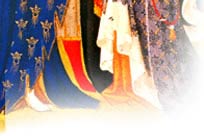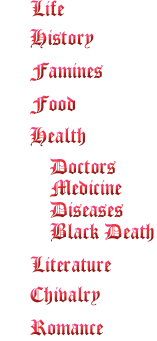 |
|||
 

|
Doctors Medieval doctors often found themselves less subservient to the Church than to astrology and numerology. Constellations and the alignment of the planets were assumed to have direct influence of the human body, thought to be comprised of four "humors" and three "spirits." Doctors may have attended courses at an early school of medicine, with the most famous medieval medical school found in Salerno, Spain. After five years of study and two exams, a medieval student could earn a license to practice medicine. Medieval surgical instruments included scissors, razors, lancets, needles and speculums. Physicians were recognized as a professional class in 1215 and they soon began to form their own guilds. As more and more doctors began their practices health and disease became more of a public concern. Medical textbooks in the Middle Ages were few and very precious. These writings wound their way from the Middle East to Spain. Ancient Greek texts were first translated to Arabic, then by Jewish translators into Latin. It is difficult to know how much knowledge was lost or erroneous from these many translations. There was a preference by many lords and by the wealthy to see doctors from the orient. It was assumed that their knowledge was far greater than that of western science, but evidence of this is scant. |
 |
|
 |
|||
 |
|||